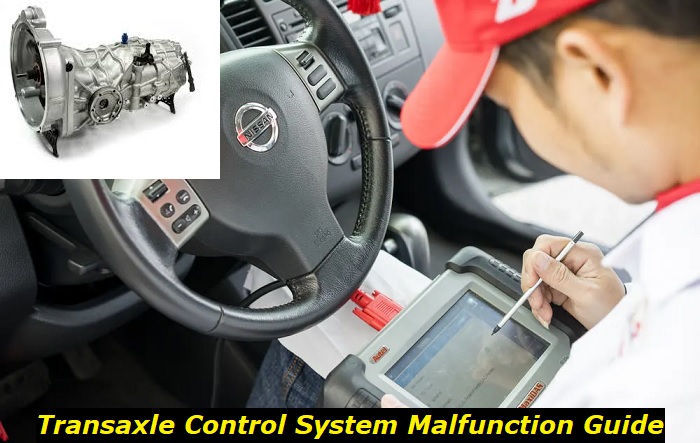Many drivers enjoy driving automatic vehicles for the ease of it. Some drivers swear by driving manual, but there's something to be said for the comfort of having your car handle the gears and shifting for you. But what if you notice your car no longer shifts smoothly?
Transaxle control system malfunction message highlights
- Common reasons:transmission control module glitch or failure
- How to fix:disconnect the module for some time, check connections, replace it
- Possible consequences:transmission may not work properly
- Priority level:High
- Can you drive?Carefully
- DIY repair:Impossible
- Repair price range:$350-$1,700

What is a Transaxle Control System?
You've definitely heard of a transmission and an axle, but the word transaxle might sound alien to you. Transaxle is a combination of the words "transmission" and "axle". Simply put, a transaxle is the combination of the transmission, differential, and drive axle into one assembly.
The transaxle eliminates the need for a large drivetrain by transferring power from the engine directly to the axles. It handles splitting torque to the wheels through the differential. It also performs the function of the transmission by handling the gear-shifting.
The transaxle control module (TCM) acts as the brain for an automatic transaxle. It observes the engine conditions to determine which gear the vehicle should be in at the moment. It controls shifting and will change the gear if it determines it to be necessary. It also engages the torque converter whenever it is needed.
Clearly, the transaxle control module is an important part of your transaxle. But what happens when you have a transaxle control system malfunction?
What Does This Problem Mean for Your Car?
Receiving this error indicates that something has gone wrong with the transaxle control module. The transaxle control module monitors input from several sensors as well as the ECU. It uses these readings to control valves and solenoids in the transaxle and to determine the optimal gear settings.
The transaxle control module handles a lot of data, and a malfunction will cause serious hindrances to the transmission in the transaxle.
The transaxle control module malfunction error, P0700, usually appears along with a second code. The second code will usually indicate the source of the problem, and rectifying the second error will typically resolve the issue.
What Causes a Transaxle Control System Malfunction
There are many possible causes of a transaxle control malfunction.
- Low Transmission Fluid
Certain parts of the transmission system, such as the torque converter, work through a pressurized fluid. When the transmission fluid level is too low, there won't be sufficient fluid pressure for these parts to work. The TCM will detect this and throw a transaxle control system malfunction as a result.
- Weak Battery
The TCM operates using input from many different sensors in the car. When any of these sensors fail, the TCM is unable to adequately control the transmission settings. When the battery voltage is too low, many of the sensors in the vehicle will not operate as they should, resulting in the ECM detecting them as offline. This may cause the TCM to fail to detect these sensors, resulting in a transaxle control system malfunction error.
- Defective Shift Solenoids
Shift solenoids are valves that the TCM uses to control the current gear setting. These solenoids can break down or get stuck with age. When this happens, the TCM will have trouble changing gears, and the transaxle control system malfunction will appear.
Symptoms of bad shift solenoids are your car getting stuck in gear, or sluggish shifting. Your car might also enter limp mode.
- Examine the Connections and Wiring of the TCM and ECM
The TCM and ECM of your car need to communicate frequently in order to keep the transaxle working in good shape. Loose connections, faulty wiring, or short circuits can interrupt the communication between them, causing this error to come up.
- Faulty Crankshaft Position Sensor
Although the camshaft is not actually part of the transmission, the TCM still needs to be aware of the camshaft position. It uses this information to determine the optimal gear settings and to adjust the transmission settings, among other things. When the crankshaft position sensor is faulty, the TCM won't be able to accurately determine the transmission settings, which can result in this error appearing.
- Faulty TCM
In most cars, the TCM never needs to be replaced. However, in some rare cases, you may end up with a bad TCM. When the TCM is damaged, the transaxle is left with no control system. If this is the case, you may notice difficult or unpredictable shifting. You might also find that your car is stuck in the same gear with no way to shift out.
How Do You Fix a Transaxle Control System Malfunction
P0700 is an ECM code that indicates that there is a problem with the TCM. An additional code that appears along with p0700 will inform you more specifically what the problem is that has been detected with the TCM. If you receive only one code with this scan, then that means your scanner is unable to read the transmission codes.
It is important to read the TCM codes to prevent you from wasting time guessing about the cause of the problem. If your scanner cannot read the TCM codes, you should be able to have your vehicle scanned for free at a nearby auto shop.
There are hundreds of dozens of different transmission codes you can receive. Here are some ways to fix the more common issues with the TCM.
1) Charge or Replace Battery
Your car battery should have a voltage above 12.6V. You can test the voltage of your car with a multimeter. If the battery is much lower than that, then you will need to charge it.
If your battery is old or weak, then you will need to replace it with a new one. Your battery should be replaced once it is about three years old.
2) Replacing Faulty Wiring
Inspect the TCM and ECM to locate any damaged wiring between them. You should also examine the connectors between them. Ensure that all connectors are well-seated and firmly connected.
Any damaged wiring should be replaced.
3) Transmission Fluid Change
You can check the level of transmission fluid in your car by pulling the dipstick out of the transmission. Wipe the dipstick, dip it into the transmission, and then check the level. If the level of transmission fluid is too low, then you will need to top it off.
Clean transmission fluid should be clear, or pinkish. A brown or red color means the transmission fluid is dirty, and you will need to replace it.
4) Check Transmission Fluid Hoses for Leaks
If you have checked your transmission fluid level and found that it is low, there is a chance that you are dealing with a fluid leak. Search for cracks and damage in the fluid hoses. You can also examine the casing of the transmission itself for leaks in any gaskets and O-rings.
If you detect leaks in the hoses, gaskets, or O-rings, then the damaged part will need to be replaced. You can also replace any other parts that are showing signs of aging or wear.
If the damage is caused by a damaged transmission oil pan or a cracked transmission casing, then you will need to have the damaged part repaired or replaced.
5) Replace Faulty TCM
If your car's TCM is damaged, it will need to be replaced as soon as possible. Your vehicle can't operate smoothly without it, and trying to drive it in this condition is sure to cause damage to the transaxle.
6) Repair or Replace Camshaft Position Sensor
A common cause of this issue is a faulty camshaft position sensor or a damaged wiring harness, Accessing the camshaft position sensor and its harness requires the removal of the intake manifold. This is a complicated procedure, so it is best to leave it to have an automotive professional handle the replacement.
Once the camshaft position sensor has been exposed, you will be able to inspect whether the sensor itself needs to be replaced, or if the harness has been damaged. If the wiring harness is damaged, then it can be replaced without needing to change the sensor.
7) Repair or Replace Shift Solenoid
If the secondary trouble codes indicate a problem with the shift solenoids or valve body, you will need to call a professional to fix it. This part of the transmission is very intricate and easy to damage if you don't have experience with it.
Usually, a problem in the valve body is caused by a damaged or defective valve or solenoid. The valve body will need to be opened so that the defective solenoid can be removed and replaced.
Conclusion
A transaxle control system malfunction means that there is a problem with the system that controls your car's transaxle. The problem usually originates from the transmission portion of the system.
The best way to diagnose the issue is by using an OBD2 scanner to search for other codes. These codes will usually be transmission codes that will point you in the direction of the problem. There are dozens of different transmission codes you might receive, but the problem is most commonly caused by low transmission fluid levels, a faulty camshaft position sensor, or a weak battery.
About the authors
The CarAraC research team is composed of seasoned auto mechanics and automotive industry professionals, including individuals with advanced degrees and certifications in their field. Our team members boast prestigious credentials, reflecting their extensive knowledge and skills. These qualifications include: IMI: Institute of the Motor Industry, ASE-Certified Master Automobile Technicians; Coventry University, Graduate of MA in Automotive Journalism; Politecnico di Torino, Italy, MS Automotive Engineering; Ss. Cyril and Methodius University in Skopje, Mechanical University in Skopje; TOC Automotive College; DHA Suffa University, Department of Mechanical Engineering






Add comment